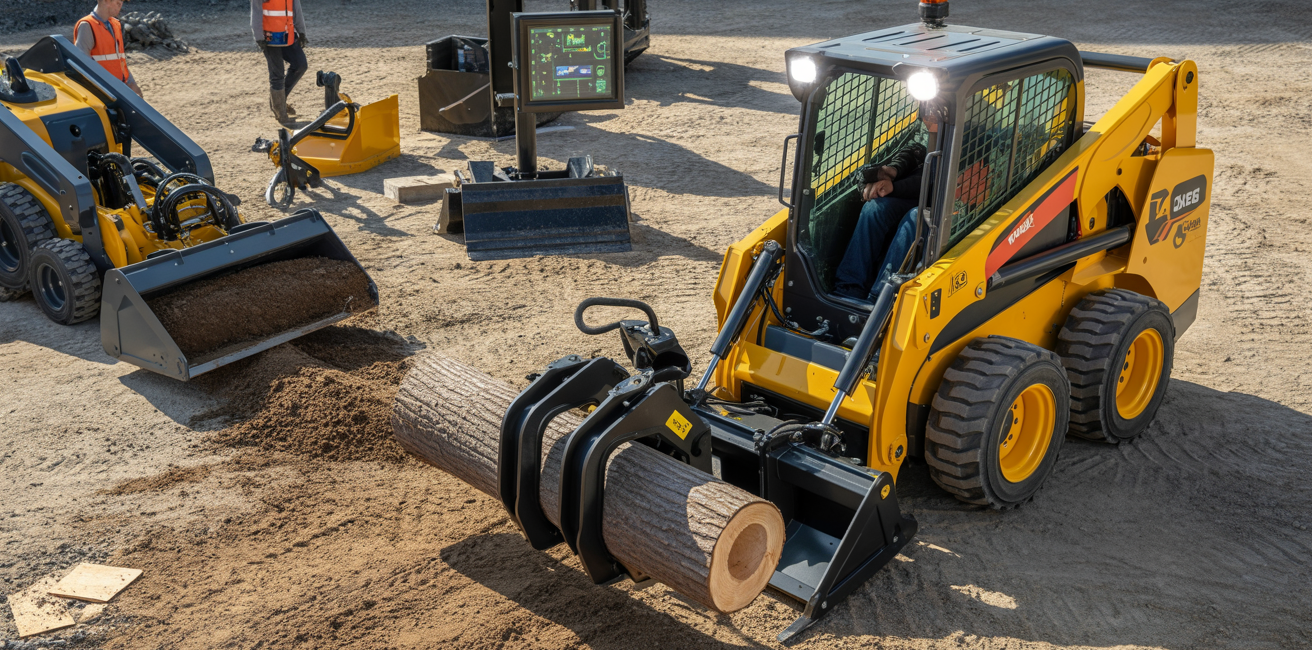
On any modern worksite, no two days look the same. One minute you’re clearing ground, the next you’re lifting, grading, or hauling. And that’s where flexibility wins.
No one’s got time to swap between a bunch of machines all day.. Projects are packed, schedules are tight, and every minute counts. So, operators are going for machines that adjust and multitask instead of being limited to one job. Be it swapping attachments in minutes or adjusting to different terrains, flexibility just makes the day easier (and a lot more efficient).
The Changing Demands of Modern Worksites
Project Diversity Is Up
On a busy site, no two hours look the same. One moment, operators clear thick brush. The next, they’re moving heavy logs or levelling a surface. Fewer machines mean each one has to adapt fast. Flexibility drives progress.
Deadlines and Crew Challenges
Tighter deadlines are everywhere. Projects can’t wait, and smaller crews mean each operator carries a bigger workload. Flexible machines let teams get more done without stretching themselves too thin. They cut down the back-and-forth between different tools and keep everyone on schedule.
Space Matters
Tight spaces are the reality on small sites or in cities. You can’t have a bunch of machines running around. Compact, flexible equipment gets the job done without cluttering the area. It’s all about staying organized and keeping work moving.
The Role of Attachments and Modular Design in Driving Flexibility
Flexibility in modern equipment comes down to one simple idea: one machine should do a lot. Skid steer attachments for sale make it possible for a single loader to handle multiple tasks without slowing anyone down. With quick couplers, tools can be swapped in minutes.
One minute the machine is trenching, the next it’s mowing thick brush or moving logs with a grapple. Smart sensors and simple digital controls make changing tools fast and safe, so the team can stay on track without any slowdowns.
These days, makers focus on machines that do more than just pack power. One flexible loader can cover jobs that used to need three machines, which is a lifesaver on smaller sites where space is tight and every tool counts.
The difference is obvious. Operators waste less time swapping tools and more time actually getting things done. Work keeps flowing, projects wrap up on time, and teams can focus on results, not juggling gear. Picking the rightskid steer attachments for saledoesn’t just simplify work. It turns a single machine into a versatile powerhouse that can handle almost any task on site.
Smart Tech Driving Flexible Worksites
Tech is making machines a lot more adaptable on worksites. Smart tech like GPS, telematics, and machine learning lets them adapt on the spot. For instance, a machine that self-adjusts hydraulic flow based on the attached tool enhances efficiency and minimizes downtime.
Autonomous and semi-autonomous features are also stepping in. Some machines can partially self-drive or adjust speed and power to suit the ground or material, letting operators focus more on precision than brute force. And remote monitoring? It’s a game changer. From the office or a tablet on site, you can check machine health, plan which skid steer attachments for sale to use, and make sure every tool is ready when you need it.
This tech also reduces downtime. Instead of running back and forth to adjust settings manually or swapping machines constantly, operators can make small tweaks digitally and keep the workflow moving. For smaller crews or busy urban projects, that’s a huge efficiency boost.
What This Means for Operators and Businesses
- Flexibility changes how work actually gets done. Operators spend less time waiting or switching machines and more time finishing tasks.
- Higher uptime matters, especially on tight schedules or multiple contracts. One machine doing multiple jobs keeps the workflow moving.
- Companies benefit by adapting quickly to new projects or challenges. “Doing more with less” without dropping quality keeps businesses competitive.
- Versatile equipment matters more than the biggest machine. Switching roles smoothly keeps projects organized and efficient.
- For operators, being skilled with flexible machines makes you more valuable. Handling different attachments and tasks efficiently boosts employability.
- Real-world impact: on busy urban construction sites or mixed-use forestry projects, one adaptable machine keeps crews moving and reduces downtime.
- Overall benefit: smoother projects, happier teams, and on-time completion without cutting corners.
- Flexibility is no longer optional. It’s becoming the industry standard, helping both operators and businesses achieve better results.
Ending on a Flexible Note
In the end, flexible machines make work less stressful and more efficient. They let operators tackle whatever comes up, save time, and help projects wrap up without unnecessary delays. Everyone wins when equipment can do more.












